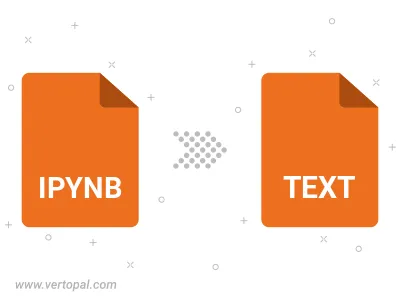Convert IPYNB (Jupyter Notebook) to TEXT HADDOCK
Convert IPYNB (Jupyter Notebook) documents to TEXT HADDOCK format, edit and optimize documents online and free.

The IPYNB file extension stands for "Interactive Python Notebook" and is used exclusively with Jupyter Notebook. It is a JSON file format that contains a complete record of user sessions, including code, narrative text, equations, and visualizations. The IPYNB files facilitate reproducible research and easy sharing of data analysis workflows. Originating from the IPython project, Jupyter Notebook has expanded its capabilities to support multiple programming languages, making it a versatile tool in the data science and machine learning communities. The format's history traces back to the early 2010s when it was developed to enhance interactive computing and collaborative work.
The TEXT file extension, associated with Haddock Markup Language, is used for documentation in Haskell programming. Haddock is a tool for generating documentation from annotated Haskell source code. It uses a lightweight markup language, similar to LaTeX, to format the documentation. The history of Haddock dates back to its creation by Simon Marlow and others as part of the GHC (Glasgow Haskell Compiler) project. It has since become a standard tool in the Haskell community for creating comprehensive and readable documentation.
Drag and drop or manually select the IPYNB (Jupyter Notebook) file from your system.
Apply IPYNB (Jupyter Notebook) to TEXT HADDOCK tools on the preview page and finalize with Convert.
Wait for the converter to finalize, then access your TEXT HADDOCK markup document.

Convert IPYNB (Jupyter Notebook) to TEXT HADDOCK, choose paper size and change page orientation to portrait or landscape.
Convert IPYNB (Jupyter Notebook) to TEXT HADDOCK and change the margins of the document.
Choose a template to change the style, and look and feel of your IPYNB (Jupyter Notebook) file and convert it to TEXT HADDOCK.
The Vertopal CLI ensures reliable conversion of IPYNB (Jupyter Notebook) document into TEXT HADDOCK markup document formats.